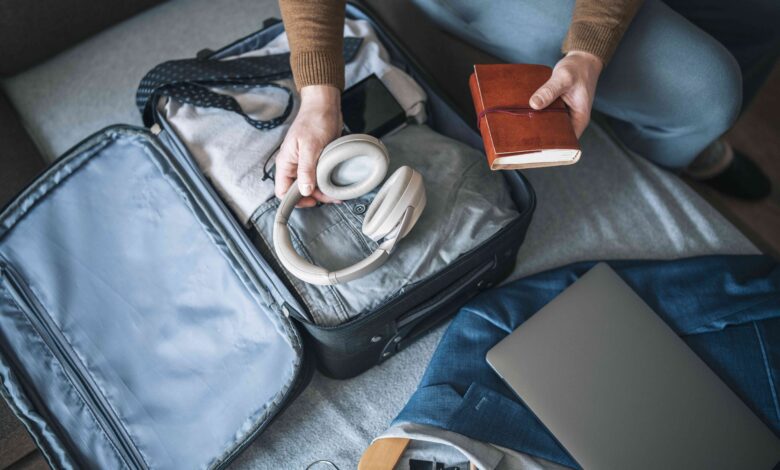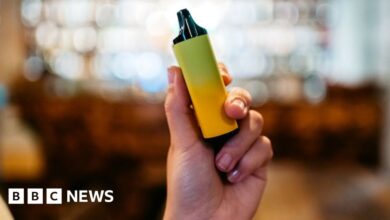Should You Travel with Your Own Carbon Monoxide Alarm?

:max_bytes(150000):strip_icc():format(jpeg)/Health-GettyImages-1372596515-918fd354a3fa4634be1607f9b2427493.jpg)
When you travel, a carbon monoxide alarm probably isn’t high up on your packing list—but it probably should be, experts say.
The dangers of carbon monoxide poisoning have received widespread attention in recent weeks; Miller Gardner, the 14-year-old son of former Yankees player Brett Gardner, was found dead in the family’s Costa Rica hotel room on March 21 from carbon monoxide inhalation.
And what happened to Miller was not an isolated incident. In February, three American women were found dead in their Belize hotel room due to a carbon monoxide leak. Twelve people died in December from carbon monoxide poisoning while they were sleeping above a restaurant in the country of Georgia.
There is no national tracking mechanism for reporting these incidents in U.S. hotels or other lodging properties. However, a 2021 study estimates that, over the past 20 years, there may have been as many as 1,498 deaths and 38,657 injuries from carbon monoxide poisoning in lodging properties.
Despite this, there are no U.S. or international regulations that mandate the installation of carbon monoxide alarms in these short-term stay properties—that means it’s up to travelers to protect themselves, said Neil Hampson, MD, carbon monoxide researcher and emeritus physician at the Virginia Mason Medical Center.
“Travel is a common source of carbon monoxide poisoning,” Hampson told Health. “The solution is to bring a carbon monoxide alarm with you.”
Here’s what experts had to say about the dangers of carbon monoxide, how poisoning incidents can happen during travel, and what to know about bringing an alarm along on your next vacation.
Carbon monoxide is a gas that’s produced when charcoal, gas, gasoline, oil, wood, and other substances are burned. It’s odorless, colorless, and tasteless.
When you breathe in carbon monoxide, the gas reduces your body’s ability to get oxygen to vital organs such as the brain, heart, and lungs, leading to symptoms including headache, dizziness, chest pain, and fatigue, said Kathy LeSaint, MD, associate professor of emergency medicine at the University of California, San Francisco.
These symptoms can easily be mistaken for other conditions, which is part of why carbon monoxide inhalation is so dangerous. People usually don’t know their symptoms are being caused by gas exposure and often pass it off as the flu, LeSaint told Health.
Carbon dioxide poisoning can even be missed even by medical teams in emergency settings because symptoms so closely mimic food poisoning or viral illnesses, said Hampton.
To figure out if someone has carbon monoxide poisoning, healthcare professionals will use a CO-oximeter. This measures carboxyhemoglobin, which is created when the carbon monoxide binds to red blood cells. Treatment involves administering oxygen—in some cases, with hyperbaric oxygen therapy—until symptoms resolve, said LeSaint.
But if left untreated, carbon monoxide poisoning can lead to heart attacks, brain injury, and death.
The most common sources of carbon monoxide poisonings in lodging properties are from water or pool heaters that are leaking the gas, or from boilers that are installed improperly or have broken vents, Lindell Weaver, MD, medical director and division chief of hyperbaric medicine at LDS Hospital and Intermountain Medical Center, told Health.
However, requesting a room away from heaters and boilers isn’t enough—the person in the room next to you could be using some gas-fueled device in their room, such as a grill, cautioned Hampson.
“When you check into a room, you don’t know what’s on the other side of the wall,” he said. “Carbon monoxide can go right through drywall.”
Though not limited to vacation properties alone, fireplaces, wood or gas stoves and ovens, generators, and vehicles can also expose people to carbon monoxide if there’s some sort of leak or issue.
If you’re traveling, determining what laws govern carbon monoxide detection devices in your destination can be more difficult than navigating with an old-school road map.
There can also be some confusion with the devices themselves, Weaver explained. Carbon monoxide alarms are manufactured to go off when the carbon monoxide concentration in the air reaches a certain (dangerous) concentration. On the other hand, carbon monoxide detectors gauge gas concentrations, but may or may not have an alarm function, said Weaver.
Currently, there are no U.S. federal regulations on carbon monoxide alarms or detectors in lodging properties. A number of U.S. states do require the installation of carbon monoxide detectors or alarms in hotels, but these statutes often have exclusions, such as only applying to newly constructed hotels or not requiring devices in all guest rooms.
Similarly, most other countries don’t have national laws mandating alarms or detectors in lodging properties, though some do, including the U.K.
Policies differ across hotel chains, but home vacation rental companies Airbnb and VRBO allow guests to search for properties with a carbon monoxide alarm when booking, and both strongly encourage hosts to install the devices.
But this online information isn’t always accurate, said Kris Hauschildt, founder of the Jenkins Foundation, a nonprofit dedicated to preventing carbon monoxide poisoning.
Hauschildt, who started the foundation after her parents died from hotel carbon monoxide poisoning in 2013, said she recently booked an Airbnb that advertised a carbon monoxide alarm, only to arrive and find there wasn’t one.
“This is the fourth rental I’ve stayed in where this has happened,” Hauschildt told Health. “Hosts have all been responsive to immediately address the issue, but it obviously highlights that safety continues to be in the hands of the consumer.”
Due to this patchwork of regulations, experts agree that the smartest move is to bring a carbon monoxide alarm with you when you travel.
The best carbon monoxide alarms for travel are “low-level” alarms that can detect the toxic gas at levels as low as 10 parts per million (ppm), according to a 2022 paper authored by Hampson.
These types of alarms are even more sensitive than those manufactured to meet the government standards.
So-called “UL 2034” alarms will only go off when carbon monoxide levels have been at 70 ppm for more than one hour, or at shorter intervals if the gas level is higher, explained Weaver. But waiting until the gas level is that high can be dangerous, especially for pregnant women, children, or those with certain health conditions, he said.
“Most of us would prefer to be warned earlier,” added Hampson.
In Hampson’s 2022 report, he found that four carbon monoxide alarms priced between $63 and $209 all worked similarly, indicating that travelers should base their buying decisions on desired features and price, he explained. Alarms for around $20 are widely available.
“A small price to pay for a potential lifesaver,” said LeSaint.
And because high levels of carbon monoxide can cause sudden unconsciousness, travelers need to not only bring an alarm, but also heed its warnings, added Weaver.
“The simple strategy is you better carry your own alarm, and if it ever goes off you better pay attention, inform management, and get out of that place,” he said.




